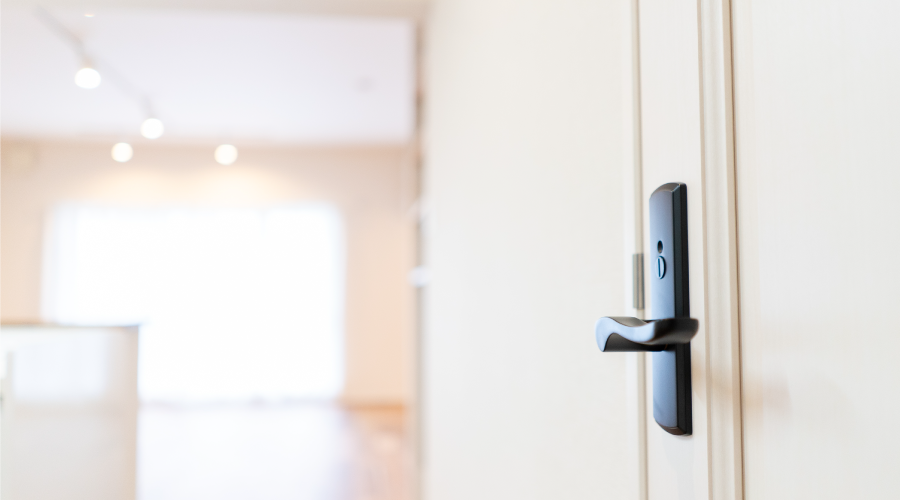Door Inspections Recommended at Least Twice Annually
Technicians should inspect all exterior and secure interior doors and test them for proper operation at least twice annually. During those inspections, they should closely examine hinges for excessive wear and replace or lubricate them as needed.
The operation of door closers on exterior doors also can create challenges. Most door closers use a pneumatic or hydraulic cylinder to control the closing speed. Over time and with heavy use, the cylinder goes out of proper adjustment, resulting in the door hanging open or slamming shut. Hanging open compromises building security, while slamming shut increases the stresses on door hinge and locking mechanisms and can damage frames. Technicians can regulate the rate of closure by adjusting the closing mechanism.
They also can test the operation of all door closers at least twice each year and adjust as necessary. High volume doors might require testing as frequently as every two weeks.
Reading the cards
The magnetic card reader is the heart of most access-control systems. It is also one of the most common trouble spots. When a user swipes a magnetic card through a reader, the reader’s head can pick up a range of contaminants from the card, including dust, lint, fingerprint oils, and magnetic oxides. As these contaminants build up on the head, they interfere with the proper operation of the head, resulting in read errors and wear. About 50 percent of read errors are the result of the buildup contaminants on the read head, according to some estimates.
The best way to reduce the number of card-reader read errors is to implement a program that cleans the card reader regularly. Most system manufacturers offer a cleaning card for the reader that is designed to remove most contaminants.
For most outdoor applications, technicians should clean card readers at least weekly. Readers in high-use locations or those in dusty or dirty locations might require more frequent cleaning. Technicians can follow the cleaning instructions provided by the card reader’s manufacturer and avoid using non-approved chemicals or cleaning techniques that might do more harm than good.
Related Topics:














